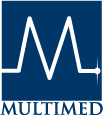An Economic Comparison of Enoxaparin and Warfarin in the Prevention of Deep Vein Thrombosis after Hip and Knee Replacement
DOI:
https://doi.org/10.4212/cjhp.v55i2.558Keywords:
deep vein thrombosis, cost analysis, enoxaparin, warfarin, thrombose veineuse profonde, analyse de coûts, énoxaparine, warfarineAbstract
ABSTRACT
Background and Objective: Deep vein thrombosis is a common complication in patients who have undergone hip and knee surgery. It is the principal cause of pulmonary embolism, which can result in death. This study was undertaken to compare the costs associated with enoxaparin and standard warfarin therapy in cases of hip and knee arthroplasty.
Methods: This empiric cost comparison was based on patientspecific nursing workload, drug utilization, and diagnostic testing during the postoperative hospital stay. Multiple regression analysis was used to determine the impact of enoxaparin therapy on the cost per patient.
Results: The expected cost for a patient without symptomatic deep vein thrombosis or comorbid conditions who underwent hip surgery and received enoxaparin was $1,244; this cost was $312 less than for a similar patient who received warfarin. The relationship was reversed for patients undergoing knee surgery: the expected cost per patient was $315 less for those receiving warfarin. Treating deep vein thrombosis and comorbid conditions added $2,438 and $455 respectively to hospital costs, irrespective of whether hip or knee surgery was performed.
Conclusions: Enoxaparin anticoagulant therapy may yield economic benefits beyond the avoidance of deep vein thrombosis and pulmonary embolism. Hospital costs after hip surgery may be lower, primarily related to the use of nursing resources, even for patients who do not experience deep vein thrombosis.
RÉSUMÉ
Généralités et objectif : La thrombose veineuse profonde est une complication courante chez les patients qui subissent une chirurgie de la hanche ou du genou. Elle est la cause principale de l’embolie pulmonaire qui peut entraîner la mort. Cette étude a été menée pour comparer les coûts associés au traitement à l’énoxaparine et au traitement standard à la warfarine dans les cas d’arthroplastie de la hanche et du genou.
Méthodes : Cette étude empirique de comparaison des coûts a évalué les données relatives à la charge de travail du personnel infirmier, aux épreuves diagnostiques et à l’utilisation des médicaments durant le séjour hospitalier postopératoire des patients ayant subi une arthroplastie de la hanche ou du genou. Une analyse de régression multiple a servi à déterminer l’incidence du traitement à l’énoxaparine sur les coûts pour chaque patient.
Résultats : Les coûts prévus pour un patient sans thrombose veineuse profonde symptomatique ou comorbidité, ayant subi une chirurgie de la hanche et reçu de l’énoxaparine étaient de 1 244 $, soit 312 $ inférieurs à ceux d’un patient présentant un état semblable et ayant reçu de la warfarine. La relation était toutefois inverses pour les patients ayant subi une chirurgie du genou ; les coûts prévus étaient de 315 $ inférieurs pour ceux ayant reçu de la warfarine. Le traitement d’une thrombose veineuse profonde et d’une comorbidité ont fait augmenter les frais hospitaliers de 2 438 $ et de 455 $ respectivement, peu importe s’il s’agissait d’une chirurgie de la hanche ou du genou.
Conclusions : L’anticoagulothérapie à l’énoxaparine peut présenter un avantage économique, outre l’évitement de la thrombose veineuse profonde et l’embolie pulmonaire. Elle peut contribuer à réduire les frais hospitaliers suite à une chirurgie de la hanche, principalement par une charge de travail moindre pour le personnel infirmier, même dans le cas des patients qui ne souffrent pas de thrombose veineuse profonde.
Mots clés :
Downloads
Downloads
Issue
Section
License
Copyright © Canadian Society of Healthcare-Systems Pharmacy.
After publication of a manuscript in the CJHP, the authors of the manuscript must obtain written permission from the CSHP (publications@cshp.ca) before reproducing any text, figures, tables, or illustrations from the work in future works of their own. If a submitted manuscript is declined for publication in the CJHP, all said rights shall revert to the authors. Please note that any forms (e.g., preprinted orders and patient intake forms) used by a specific hospital or other health care facility and included as illustrative material with a manuscript are exempt from this copyright transfer. The CJHP will require a letter from the hospital or health care facility granting permission to publish the document(s).









